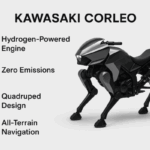When I read about recent work at Montana State University and Texas A&M on novel self-healing materials, it inspired me to do additional research on the subject. Self-healing materials mimic nature using similar types of constructs to achieve the same results. For example, some materials contain vascular networks similar to blood vessels. Some can reform chemical bonds or heal through reverse reactions. Some use responsive chemistry.
Where would such materials be useful?
Imagine an accident damages the bumper or door of your automobile. If the structural materials were self-healing polymers, the vehicle in no time would look as good as new without having to go to a body shop.
Imagine concrete and asphalt that contain capsules of mineral-producing bacteria capable of sealing cracks and improving durability. Such self-healing materials combined with anti-corrosion coating for metal could make the difference between a building falling down, like the one in Surfside, Florida, or one that remains self-healing and still standing.
Imagine tires that contain self-sealing layers to block punctures, or self-healing membranes to stop Li-ion batteries from overheating, or food packaging made from self-healing polymers that extends the shelf life of produce.
The Montana State University and Texas A&M research no longer requires imagination. These two schools are making self-healing materials happen.
Mycelium-based Engineered Living Materials
At Montana State University, unlike the examples listed above, the work entailed using living building materials derived from fungal mycelium. It provided scaffolding for bacterial cells to adhere to and grow. Made with orange bread mould, as the bacteria adhered to it, the scaffold calcified.
The self-healing materials at Montana State fall under a category called ELMs (engineered living materials). Normally, ELMs are soft like self-healing hydrogels, supramolecular, polydimethylsiloxane and liquid-metal elastomers, squid-inspired stretchable synthetics, and self-healing polymers used in touch, display screens and circuit boards.
ELMs uses today cover soft robotics, wearable electronics, biomedical devices, and computer screen and small device displays.
When asked why this self-healing material can be a significant advancement, Chelsea Heveran, Assistant Professor of Mechanical and Industrial Engineering, pointed to the fact that the material can be created on site with on-hand materials that are locally available. It can be produced at low temperatures and is low carbon. Heveran cites the following example where a mycelium-based ELM would be a perfect substitute.
“Imagine for a moment that we have some kind of disaster in a remote, hard-to-reach area. Maybe it’s an earthquake, and you need some critical infrastructure like a new road so you can meet the needs of the people there. If we want to make it out of concrete, we need to get the cement there and potentially the aggregate, we need to mix it and pour it, and after that, it might take weeks to even a month before you can use it at full strength.”
Using the mycelium-based ELM, a scaffolding could be quickly engineered on site to provide a concrete substitute. The material, currently, is not yet strong enough for such an application, but Heveran is convinced it soon will be. For the moment, it is being used in non-structural applications and interior finishes.
Self-Healing Polymer Could Save Satellites From Debris Hits
Material scientists at Texas A&M University have invented a self-healing polymer that, when struck by a high-speed projectile, can stretch to allow the object to pass through it without creating a hole.
The polymer belongs to a class of materials called Covalent Adaptive Networks or CANs. The material itself is called a Diels-Alder Polymer or DAP. When struck by an object travelling at Earth-orbital speeds, it absorbs the kinetic energy from it and then stretches and liquifies before rapidly cooling and reforming, leaving only a tiny pinhole or none at all. In reforming, it retains its function as well.
The DAP could prove an effective defence for satellites such as those in constellations like Starlink, to continue functioning despite debris strikes. Between 2019 and 2023, Starlink satellites performed more than 50,000 maneuvers to avoid potential collisions with orbital debris and other satellites. Objects in low-Earth orbit travel at speeds of 8 kilometres (5 miles) per second, faster than a speeding bullet.
DAP materials created at Texas A&M were tested using laser-induced projectile impacts. They were up to the task at a nanoscale. Behaviour at a larger scale needs to be done. Testing of the material will also be done to determine if it can survive the harsh environment of space.
How does DAP do it? Its structure contains long chains of carbon-based molecules with double bonds. In the image below, you can see a micrometeoroid or piece of space junk striking a satellite.

Svetalna Sukhishvili, Professor in the Department of Materials Science and Engineering, states, “This is the first time a material at any scale has displayed this behaviour.”









